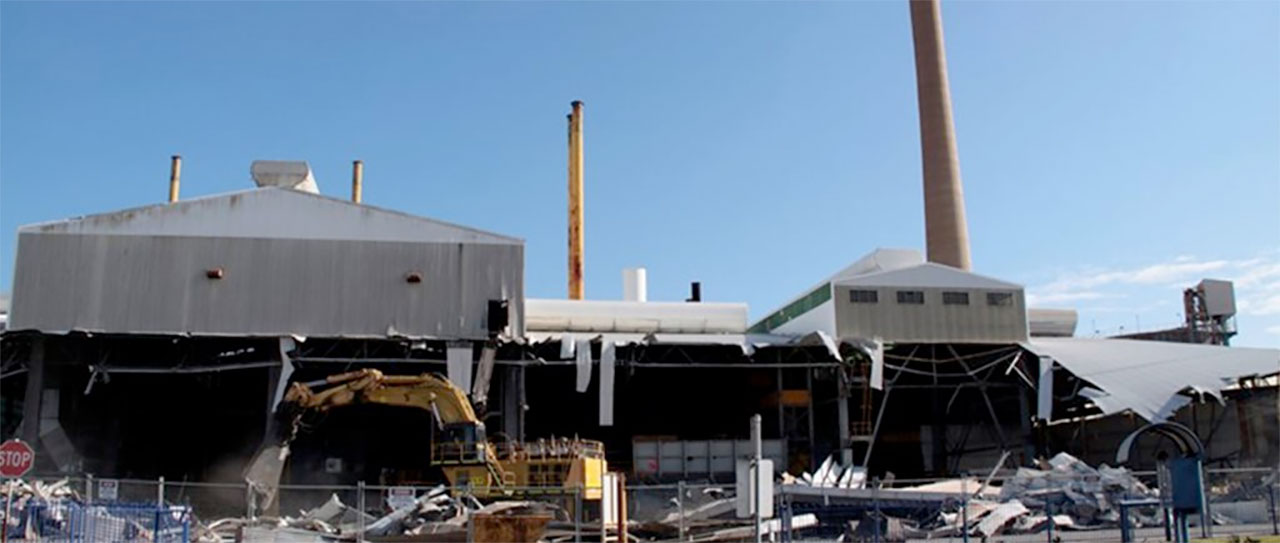The smelter was placed into ‘care and maintenance’ mode in late 2012 as Hydro considered its options for the site. Due to factors such as the global market and market price for aluminium, the value of the Australian dollar, and running costs, for a smelter of this type, Hydro decided that manufacturing aluminium at this smelter was no longer viable and announced the full closure of the site in May 2014. This decision allowed for the demolition, remediation, and redevelopment of the site, to enable future opportunities for the land, and the region.
Frequently Asked Questions

The site demolition is completed. The engineered on-site containment cell is completed and will be monitored for the next five years before being handed over to the State government to manage.
More information on this subject is located on our Community Reference Group page, which will be updated as new information becomes available.
The former smelter site has been rezoned for employment land (industrial/business), while the large buffer zone will include residential development, and the conservation of a large proportion of the site that contains valuable biodiversity.
More information on this subject is located on our Rezoning page and there is also considerable detail in the CRG minutes.
Yes. Parts of former Hydro owned land have been rezoned for residential development.
Hydro is not a land developer and has sold the land to the McCloy-Stevens Group to allow the residential development to progress.
Hydro has renewed the leases for both the Kurri Kurri Speedway and the Junior Motorcycle Club. The leases are open ended, as any future arrangements will need to be put in place with the new owner in due course.
Several areas, making up quite a small proportion of the overall site, were identified as containing contaminants. Hydro has remediated these areas to ensure the land suitable for its future use.
More information on this subject is located on our Demolition and Remediation page and more details are in the CRG minutes.
No. Consistent with the expectations of key stakeholders including the EPA and the general community, Hydro ensured that the remediation strategy for the site included the construction of an engineered containment cell for non-recyclable wastes and contaminated material – this is now completed. Site materials including concrete, metal and smelter wastes (such as spent pot lining) that could be recycled, have been, where it was reasonable and feasible to do so.
A containment cell is a fully sealed container, engineered with multiple barrier layers, specifically designed to encapsulate and lock away waste material, prevent water from entering, and to minimise and capture any gas or leachate generated. Containment cells are current best-practice for the management of many wastes and contaminated materials around the world.
On-site containment has been used globally and locally to remediate contamination (including smelter wastes) and can be found in areas such as Sydney Olympic Park at Homebush Bay, the former Pasminco smelter at Cockle Creek, the former BHP site at Mayfield, at Charlestown in Lake Macquarie, and Carrington in Newcastle.
More information is available on our Demolition and Remediation page, which will be updated as more information becomes available.
Hydro committed to consulting with the community throughout the life of this project. The following are engagement tools that we established to help the community stay informed about and provide input into what was planned and encourage two-way communication:
- Hydro website www.regrowthkurrikurri.com.au
- Community information email address kurri@hydro.com.au
- Community telephone line 1800 066 243
- YouTube Channel
- Community Reference Group (CRG) which met regularly and acted as a liaison point between the community and the project. The group was made up of community representatives from Council, community groups, business groups and local residents. CRG members were encouraged to provide information about the project to interested community members. The CRG held its last meeting in February 2024. More information about the CRG is available on our Community Reference Group